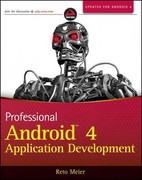Answered step by step
Verified Expert Solution
Question
1 Approved Answer
In C++ you can also declare pointers to non-static class members. Both function and data members can be pointed to. The pointers are not really
In C++ you can also declare pointers to non-static class members. Both function and data members can be pointed to. The pointers are not really addresses, though; they are just offsets. In the case of data members, they are just offsets into an object. In the case of member functions, they are offsets into the classs list of functions. The following example illustrates pointers to member functions. Note the necessary parentheses when declaring and accessing a member through a member pointer. This is because a function call has higher precedence than :: or *.
class C
{
public:
void f() {cout
void g() {cout
};
int main()
{
C c;
// Using an object
void (C::*pmf)() = &C::f;
(c.*pmf)(); // Executes c.f()
pmf = &C::g;
(c.*pmf)(); // Executes c.g()
// Using pointer to an object
C* cp = &c;
pmf = &C::f;
(cp->*pmf)(); // Executes cp->f()
pmf = &C::g;
(cp->*pmf)(); // Executes cp->g()
}
Compile and run this program and observe the results. Make sure you understand it. Youll have to include , of course. Make up your own example that uses pointers to data members.
Step by Step Solution
There are 3 Steps involved in it
Step: 1

Get Instant Access to Expert-Tailored Solutions
See step-by-step solutions with expert insights and AI powered tools for academic success
Step: 2

Step: 3

Ace Your Homework with AI
Get the answers you need in no time with our AI-driven, step-by-step assistance
Get Started


